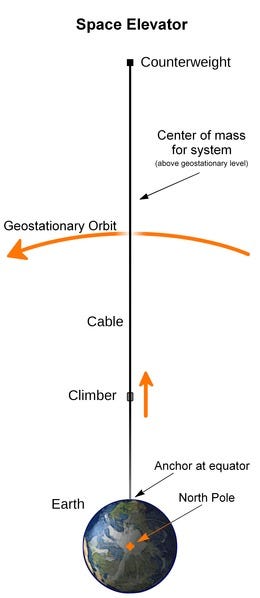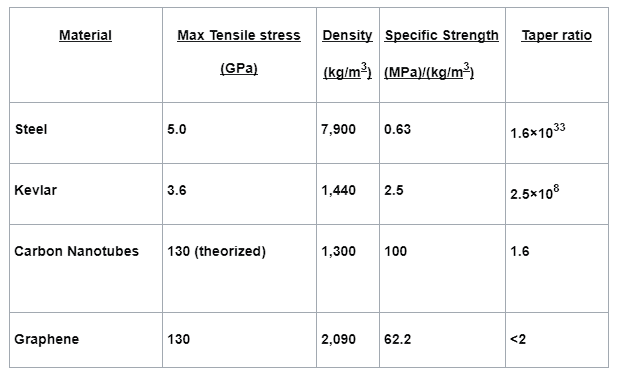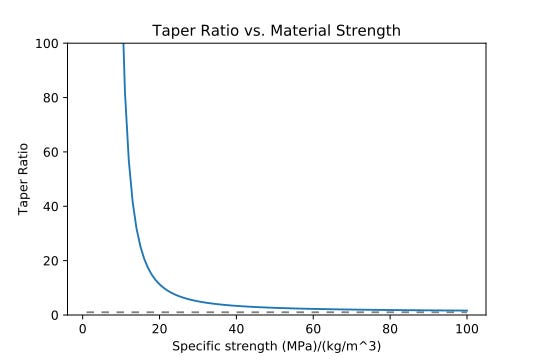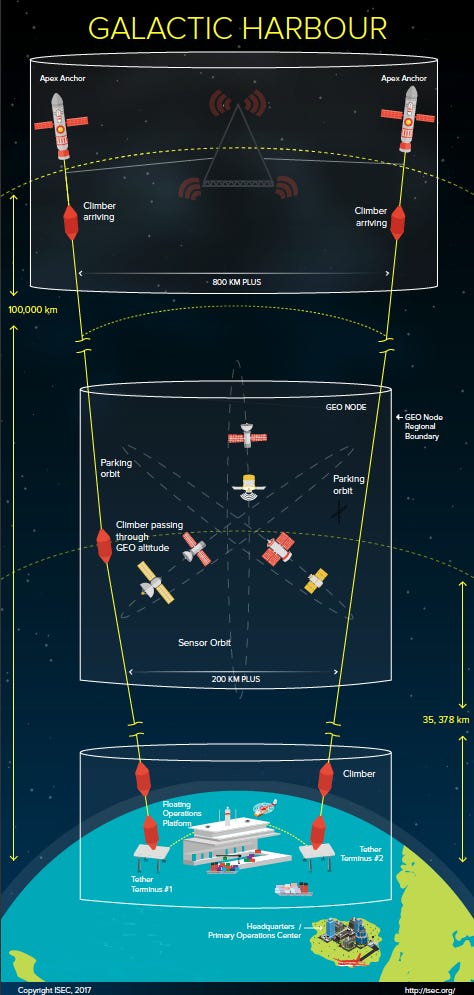Introduction
Space travel has advanced in many ways since Apollo 11 landed on the Moon in July 1969. For one, the national space strategy of the United States has undergone many changes in its direction. After six crewed landings on the Moon, the United States stopped sending humans at all, instead opting for launching probes to survey the other planets in the solar system. In the early 1970s, two space stations were launched: Salyut 1 by the Soviet Union, followed by NASA’s Skylab. This was followed by the emergence of the Shuttle era, where human spaceflight was dominated by partially reusable spacecraft that would enter low Earth orbit for short periods of time, lasting up to just under eighteen days. While the Shuttle program endured for thirty years, it was marred by disaster, with the Space Shuttle Challenger’s explosion in 1986 upon ascent, and the Space Shuttle Columbia's explosion upon descent in 2003. The shift in the 1990s towards the International Space Station, a joint international project consisting of the United States, Russia, Europe, Canada, and Japan, represented a brief hope that international space exploration would herald in an era of peace between world powers. With the end of the Shuttle program, and the rise of private spaceflight companies led by SpaceX, the current era of space exploration constitutes a paradigm shift for how space exploration and development is conducted.
Other than increasing the cadence of spaceflight opportunities, SpaceX’s greatest achievement has been its ability to drive down the cost of access to space. While data is hard to compare over the years due to varying rocket classes (small, medium, heavy), an apt comparison can be seen between the Space Shuttle program, and SpaceX’s current Falcon Heavy. Both heavy class spacecraft, the Space Shuttle averaged $65,400 per kg to low Earth orbit, while as of 2021, the Falcon Heavy averages $1,500 per kg to low Earth orbit. In other terms, the Falcon Heavy has a price point of about 2.3% of the Shuttle’s price. While SpaceX’s Starship has yet to be fully realized, research suggests that it will eventually be able to send mass to orbit for hundreds of dollars per kg, if not even cheaper. Assuming that this trend toward cheaper, reliable access to space continues, there will be opportunity for more creative space projects to come to fruition. Of these projects, some could lay their own claim to increasing access to space via increasing the amount of mass being able to be raised from the Earth.
One such space project which has been a dream of some aerospace engineers for the past century is the space elevator. Originally dreamt up in 1895 by one of the founding fathers of modern rocketry, the infamous Russian Konstantin Tsiolkovsky, the concept of the space elevator has, over the course of the past century, seen many advancements and differences in its design theory. Tsiolkovsky’s concept was a simple yet massive tower that would reach all the way to geosynchronous orbit, roughly thirty-six thousand kilometers from the point touching the ground. At the end of the nineteenth century, this was impossible to build, and remained a theoretical concept in Tsiolkovsky’s mind. Across the twentieth century, the idea was revisited several times, but still from a conceptual standpoint. Various aerospace engineers of the era speculated that it would be better to build downward, starting at a geosynchronous point, instead of building the tower up, as Tsiolkovsky had postulated. Around this time, the debate began on what kind of material would have a tensile strength strong enough to withstand the forces of gravity and orbital pull. Some space elevator concepts consisted of a cable with no variation in its diameter across the nearly thirty-six thousand kilometers from geosynchronous orbit to the ground. Other designs suggested varying the length of the diameter at regions where the tensile strength of the cable would need to be stronger.
While much thought has been put into the engineering design of the space elevator and related concepts, not much work has been placed into examining the ramifications of such a project, geopolitically, militarily, and culturally. In recent years, due to advancements in carbon nanotube design and other materials, as well as advanced manufacturing, there has been a renewed examination on the possibility of creating a space elevator. While so much of space exploration and development focuses on rocketry and satellites, there has not been much discussion on space megaprojects. This literature review aims to explore what is possible in the realm of creating a space elevator, examining what is and may one day be technically possible. The natural starting point for this literature review is to quickly describe the design and specifications of a space elevator. Following this, the Edwards report will be examined, which provided one of the most extensive deep dives into the subject, in 2003. After this, the literature review will lay out which possible materials could eventually build a space elevator. Next, a few various proposals will be investigated, followed by current day bottlenecks to constructing this type of space infrastructure. Finally, this paper will examine possible alternative structures and designs for a scaled-back, grounded approach to a space elevator.
Design and Specifications
There are four essential elements in a standard space elevator design: the anchor, the climber, the cable, and the counterweight. The anchor, importantly placed at Earth’s equator, holds the structure to the Earth. Some space elevator design concepts have this placed in an ocean, preferably attached to a mobile sea platform, so as to limit potential negotiations over international territory disputes. The climber is what brings cargo from the base on Earth up to the station on top of the space elevator, beyond geostationary orbit. The cable is the element that composes most of the space elevator itself, and runs the full distance from Earth to the counterweight, roughly 36,000 kilometers. Finally, the counterweight, which sits on the orbital end of the space elevator, is what holds up the entire apparatus, in a similar way to how the anchor holds down the space elevator to Earth.
Fig.1. Space Elevator Structural Design, Wikimedia Commons.
The Edwards Report
From 2001 to 2003, NASA’s Institute for Advanced Concepts funded an American physicist, Bradley Edwards, in his work to examine the space elevator concept. In the final report, Edwards addresses the question of why a space elevator should be built, in both the challenges facing the space industry, and the potentials the space elevator would unlock. He writes that a space elevator would:
· Place heavy and fragile payloads in any Earth orbit (with a circularizing rocket) or send them to other planets.
· Deliver payloads with minimal vibration.
· Bring heavy and fragile payloads down from space.
· Deliver payloads to space at a small fraction of current costs.
· Send a payload into space or receive a payload from space every few days.
· Be used to quickly produce additional cables or increase its own capacity.
· Survive problems and failures and be repaired.
Edwards surmises that nearly every aspect of space and society would see transformation with the completion of a space elevator, and he speculates about this with a long list of potential advances as enabled by this infrastructure. These potential advances are nothing short of paradigm-shifting for the current day space industry. Today, nearly all space company revenue is a result of satellite communications and a few other applications. Enabling any of the possibilities listed below would completely transform human capabilities in space:
· Inexpensive delivery of satellites to space at 50% to possibly 99% reduction in cost depending on the satellite and orbit. This would allow for more companies and countries to access space and benefit from that access.
· Large-scale commercial manufacturing in microgravity space. Higher quality materials and crystals could be manufactured allowing for improvements in everything from medicine to computer chips.
· Sensitive global monitoring of the Earth and its environment with much larger and more powerful satellites. Extensive observing systems could be implemented to truly understand what we are doing to our environment.
· Large orbiting solar collectors for power generation and transmission to Earth. Power could be supplied to rural communities around the world.
· Multiple, large and inexpensive spacecraft for solar system exploration. Instead of very expensive small spacecraft taking a few photos we would have less expensive, larger spacecraft doing long-term planetary studies with videos, and a suite of every valuable scientific instrument to fully understand our neighbors.
· Military operations would be dramatically altered with almost unlimited access to space.
· Future mining of near Earth asteroids for rare metals.
· Future vacation facilities in space. This won’t be tomorrow or in the first year of operation of the space elevator but with an aggressive program our children could make reservations for a week in orbit and afford it.
It is worth mentioning that, twenty-one years after Edwards published this report, no human spaceflight program has come close to enabling any of these potentials. Some have moved toward the goalpost (satellite delivery to space has gone down in cost and have seen their monitoring functions become considerably more advanced) but asteroid mining, large-scale commercial manufacturing in microgravity space, and orbiting solar collectors are nowhere to be found.
Edwards ends his report by listing seven critical areas for future study:
Nanotube production: Can nanotubes be produced with the required properties? How easily can nanotube production be scaled up?
Small-scale cable design: What is the best design for the cable on small scales?
Cable production: What are the difficulties in producing the cable and at the rates required?
Full-up power beaming test: How well does the complete system work at the required power levels?
Cable splicing on-orbit: What is the best method to attach additional small fibers to the edge of the initial cable?
Damage by small, grazing-incidence meteors.
Protection from Atomic Oxygen: Are carbon nanotubes susceptible to atomic oxygen erosion? What are the optimal coatings for protection against atomic oxygen and can they be coated onto carbon nanotubes and epoxy? What is the wear rate of this coating under high-speed climber traffic?
The legacy of the Edwards report can be best represented by the many groups who continued advancing space elevator hopes and concepts in the following twenty years. An inquiry into several of these groups will continue in the “Proposals” section of this paper. However, like Tsiolkovsky and the other researchers after him, Edwards and his monumental report are an important milestone in the long journey toward perhaps one day actually constructing a space elevator.
Materials
Perhaps the most important concept to understand when evaluating the concept of the space elevator is tensile strength. Tensile strength is defined as the “maximum load that a material can support without fracture when being stretched, divided by the original cross-sectional area of the material.” Any serious plan that intends to send tons of cargo up the structure to orbit needs to be designed strong enough to not snap the cable at any point in the long journey. The force placed on the object varies across its location; in other words, the tensile strength required at a point in low Earth orbit is different than it is a few kilometers above the ground, or in geosynchronous orbit. The greatest tension placed on the space elevator would be right at geostationary point, and would require a material with a tensile strength that could withstand a force of 100 gigapascals. Different materials will naturally have different tensile strength/density ratios.
The chart below lists a few proposed materials compared by max tensile stress, density, specific strength, and taper ratio, as listed in P. K. Aravind’s “The Physics of the Space Elevator.” I have added in graphene at the end, as graphene had not been fully realized at the time of the paper’s release in 2006 (groundbreaking experiments regarding the two-dimensional material graphene won Geim and Novoselov the Nobel Prize in Physics in 2010). Current proposals consider graphene to be among the best candidates for the material design due to its high tensile strength and taper ratio.
As seen in Figure 2 below, the greater the specific strength of the material, the lesser taper ratio required.
Fig. 2. Taper Ratio vs. Material Strength, Wikimedia Commons.
Currently, the best bet for space elevator cable material is graphene. While carbon nanotubes have a theorized max tensile stress point of 130 GPa, this has only been speculated, never realized in a lab. Carbon nanotubes (with a few exceptions) have not seen a tensile stress point past 63 GPa, although this does not mean that it will not be realized in the near term future. In 2018, researchers at Tsinghua University produced carbon nanotube bundles with a tensile strength of 80 GPa. Graphene, on the other hand, has actually seen laboratory synthesis of 130 GPa.
Proposals
As of 2024, there are several groups interested in designing and building some version of a space elevator. Perhaps the largest amount of modern information compiled on space elevators has been synthesized by the International Space Elevator Consortium. This consortium hosts an annual conference on the state of space elevator progress, in addition to producing reports on various aspects of the space elevator itself. Their vision, named the Galactic Harbour, entails a combination of the Space Elevator Transportation System and the Space Elevator Enterprise System. The project intends to see three Galactic Harbours developed during their development phase, between 2035 and 2043.
Fig. 3. Galactic Harbour, ISEC.
Another party interested in the benefits of constructing a space elevator is the Obayashi Corporation. Their space elevator design is more speculative and relies on technology levels advancing rapidly in the next few years, but the corporation is notable in that it was the main contractor for the Tokyo Skytree, the tallest tower in the world. The Obayashi Space Elevator outlines a completion date of 2050, with a capacity to carry 100-ton climbers, a 96,000-km carbon nanotube cable, a 400-m diameter floating Earth Port and a 12,500-ton counter-weight. Similarly, China may be considering developing a structure similar to others proposed here. In 2021, Wang Xiaojun, who at the time led the country’s development of the Long March rocket manufacturing, claimed China was working on a “Sky Ladder” that could send humans and cargo up to orbit on a system composed of carbon nanotubes, although little has been disclosed about this project since.
Bottlenecks and Problems:
Perhaps the greatest challenge in constructing a space elevator is the sheer size of the project. Producing any amount of material with the tensile strength to withstand snapping along the tower is difficult, but synthesizing enough of this material to span the range of roughly 36,000 kilometers is a logistical nightmare. Even being able to produce on this scale is not enough, as it likely needs to be transported into orbit and built down, if not constructed all in orbit, which would be a gargantuan task itself. 36,000 kilometers poses a different challenge as well. As physicist Casey Handmer notes, even if it were possible to craft one kilometer of material for the cable per day, it would still take one hundred years to build the elevator- an insane amount of time to spend on any project. Logistical problems aside, there are three key bottleneck costs for this project. The first is the manufacturing cost of synthesizing enough material for the space elevator. Carbon nanotubes have barely been replicated in labs, and at miniature scales; producing enough at a scale to build a space elevator would be an enormous challenge, from both a production standpoint and a cost perspective. Graphene has seen better reproduction and synthesis in recent years, but is still expensive; producing the amount required for this project would be at least a generational task. If not produced somehow in orbit, these materials would need to be launched from the Earth and spun down. While launch costs have decreased dramatically in recent years, this would still require hundreds or thousands of launches, and space flight is still expensive enough for that to be a large bottleneck. Finally, any space elevator plan would need a sufficient power source to keep the machinery functional and operational. Powering a 36,000 kilometer tall tower is a logistical problem, with varying solutions, but still an issue that needs further study.
Alternatives
If this literature review has not effectively made this point yet, then it should be noted here that space elevators are really hard to build. Advancements in physics, manufacturing and production, and spaceflight might eventually lower the obstacles that stand in the way currently (see “Bottlenecks and Problems” further down), but at the moment, any serious attempt to construct something resembling a space elevator would need to be scaled down if it were to be constructed on any feasible time scale. Luckily, theorists have been thinking about this problem for awhile, and there are several notable concepts that could be crafted with current-day resources, but would exist on a much smaller scale. Three of the most probable alternatives are discussed below.
Tethers
NASA and others have proposed techniques for moving objects into orbit via other infrastructure means than space elevators. One possibility, examined by NASA’s Marshall Space Flight Center, would use the principle of momentum exchange to sling slower moving payloads from a point in low Earth orbit to geosynchronous orbit, using a space tether. This particular proposal would “deploy a 150 kilometer long tether that uses a combination of electrical current and gravity to put the tether into a tight spin, altering its orbit into an elliptical pattern.” This would still require getting cargo into low Earth orbit without the assistance of the tether, but would also minimize the amount of infrastructure needed to be built (150 kilometers instead of 36,000 kilometers).
Skyhooks
In ‘Satellite elongation into a true "sky-hook"’ from 1966, Isaacs, Vine, Bradner, and Bachus proposed a more feasible solution:
“The theoretical possibility of self-supporting cables extending into space from earth and from extraterrestrial rotating or revolving bodies is examined. In principle, augmentation (and duplication) of the installation and the launching of masses into orbit or into space could be accomplished with energy derived entirely from the rotation of the central body. In practice, a portion of the total energy requirement would probably be supplied by simple mechanical devices.”
This concept was expanded upon by Hans Moravec in his 1977 publication, “A non-synchronous orbital skyhook.” The specifications for this orbital skyhook, as stated in the abstract:
“Characteristics of a low circular equatorial orbit satellite equipped with two long cables which touch the planet's atmosphere, or even the surface, each rotation are described. The two long cables extend in opposite directions, and the system acts like the two spokes of a giant wheel rolling on the equator. The orbit is stable, and skyhook taper is minimized when the satellite's diameter is one-third that of the planet. Taper and mass ratios for three lengths of derated graphite skyhooks for solar system bodies are provided for synchronous, 1/3 ratio, and optimum orbits. Characteristics of tapered derated carbon (graphite) whiskers are discussed, and formulas which indicate taper requirements are derived. Parameters of a minimum-taper satellite rotating earth are reported, and the stability is considered.”
Space Pier
J. Storrs Hall, the nanotechnology researcher and author of “Where Is My Flying Car?” has proposed a unique structure that would differ slightly from traditional space elevator proposals. Referring to it as the space pier, Hall writes:
“Build a structure 100 kilometers tall and 300 kilometers long. Put a linear induction (or other electromagnetic) motor along the top. An elevator goes straight up 100 kilometers to the starting end. Payloads are then accelerated horizontally into orbit with an acceleration of only 10 G's (which appropriately cushioned humans can stand for the 80 seconds required). This hybrid approach overcomes the drawbacks of both the typical orbital tower schemes (it's less than 1% the height of a skyhook) and electrolaunch ones (air resistance at 100 km is a million times less than at sea level).”
Hall speculates that constructing this type of infrastructure would not be easy, but with mature nanotechnology, the cost of production would decrease and the strength of the material (likely diamond) would increase, stating that “Cost reduction on the order of 100 seems quite feasible.”
Conclusion
Space elevators have been a staple of science fiction for almost a century, and for many aerospace engineers, the ultimate design challenge. The possibilities such a massive piece of infrastructure offers are boundless, from sending mass to orbit cheaply, to enabling any of the potentials Edwards suggests in his flagship report. The scope of such a megaproject would not only be seen in spaceflight, though. While hard to measure at this moment, it is undeniable that a fully constructed space elevator on Earth would have effects on human culture. However, there remain strong challenges to the case for space elevators, at least terrestrial space elevators. The economics of space flight have undergone a massive change in the past decade due to the paradigm shift that is SpaceX. If Starship works, then one of the main economical reasons for building a space elevator (cheap cargo to orbit, consistently) is no longer as strong, as reusable Starships will match or even beat the price that a space elevator would offer, without the massive construction cost and timeline. However, if Starship works, it has another effect, which is that the material to build a space elevator would be cheaper on whole orders of magnitude to place into orbit and spin down. There might be other reasons besides economics to build a space elevator in the near term future. A subsequent piece will examine the case for constructing a space elevator as an international project that could bring rival nationals together, similar to the way the International Space Station was created in the final years of the twentieth century.
As mentioned previously, if a space elevator is too much of a burden to build, there are other possibilities. Space tethers, skyhooks, and space piers are all fascinating proposals that would require much less materials and construction, with most of the benefits a space elevator would provide. As certain groups, like ISEC, Obayashi Corporation, and nations like China explore and start building their proposals further, there may come discoveries that will change the world, like the MRI machine originating during the Apollo years. In fact, if these groups or others begin crafting graphene or carbon nanotubes at scale, there is likely to be breakthroughs in the fields of material science and nanotechnology, which would certainly have a positive effect on society and life. There is much to explore here, and the next few decades will see further progress on this concept.
Follow-up Subjects
A follow-up piece will examine:
Using a space elevator or other large space megastructure projects to increase global coordination, like the International Space Station.
Techniques and companies that could be involved in launching payloads to a space tether (for instance, what Astro Mechanica is building).
Locations to build a space elevator, an examination of the geopolitics of building this somewhere on Earth, and the trade-offs of building one on the Moon or Mars instead.
Can better carbon nanotubes or graphene be synthesized in low gravity?
Special thanks to the Space Futures Initiative for funding this literature review!

























